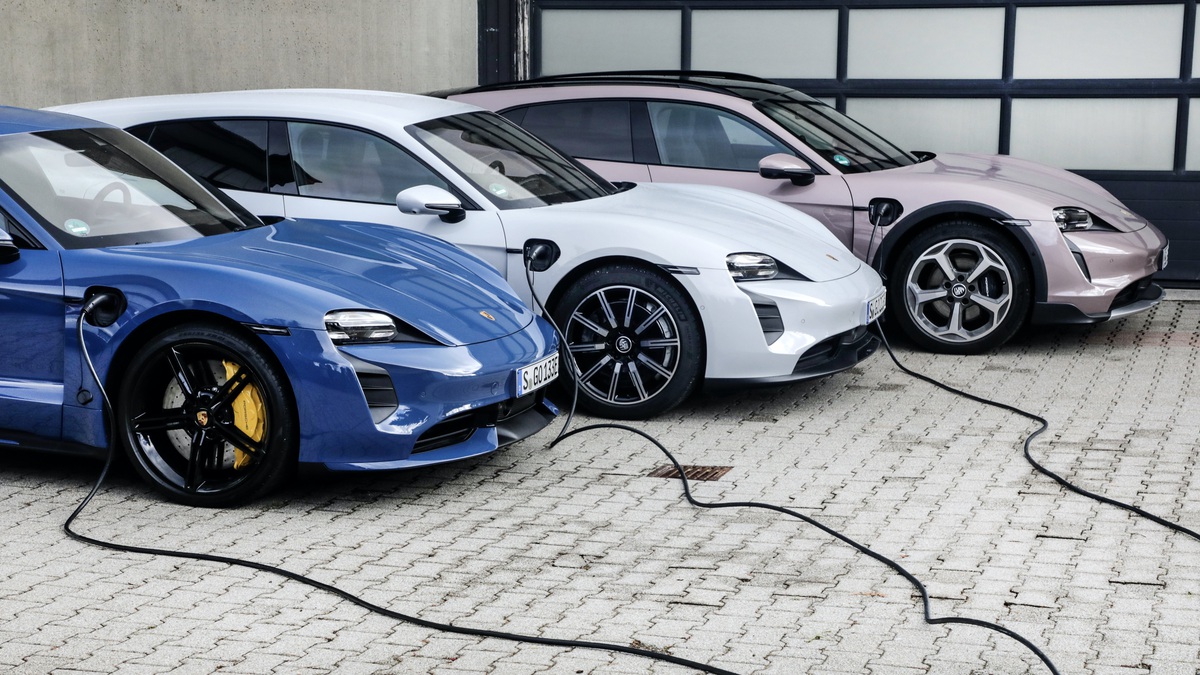Until now, electricity for electromobility has mainly flowed in one direction – from the charging point to the vehicle. But this could soon change with vehicle-to-grid applications.
In future, when electric cars are not being driven, they could also feed energy back into the public power grid. As part of a wider pool of vehicles, they could effectively act as a power plant and help supply what is known as balancing power – electrical power that balances out fluctuations in the power grid.
A realistic pilot test conducted by Porsche, the grid operator TransnetBW and consulting firm Intelligent Energy System Services (IE2S), has demonstrated that electrical balancing power can be stored in the high-voltage batteries of an intelligent ‘swarm’ of electric cars.
Five series-production Taycan were connected to the power grid via the Porsche Home Energy Manager (HEM) both in a domestic environment and under laboratory conditions. Experts from Porsche Engineering had already adapted the software of these control centres beforehand for the field test.
“The charging technology of the Porsche Taycan and our Home Energy Manager and Mobile Charger products have a lot of potential for the future: the pilot test proved that,” said Lutz Meschke, Deputy Chairman of the Executive Board of Porsche AG.
“And the balancing power market isn’t the only thing a pooling system of this kind can be used for.
“Advanced solutions for green charging and other vehicle-to-grid applications are also conceivable. And that’s not all: if electric vehicles feed electrical energy back into the grid in the future for example with a private photovoltaic system, contributing to the expansion of regenerative energy, it will further increase the acceptance of e-mobility.”

With the expansion of renewable energies, balancing power will become even more important in the future for secure grid operation. This is because the power grid must always be stable, even though the wind and sun are not always producing consistent amounts of energy.
If power grids are not stabilised at a constant 50 Hertz power frequency, there is a risk of power cuts. Until now, conventional power plants in particular have been responsible for cushioning these fluctuations.
Using high-voltage batteries as a buffer would be a win-win situation: drivers of electric cars could be financially compensated for their contribution to balancing power. The key element of the data communication used in the pilot test is a cloud-based pooling system developed by IE2S.
This coordinates and controls the charging processes of the electric vehicles in real time, by translating the grid operator’s balancing power setpoints into vehicle-specific signals.
The pooling system also controls the high-frequency and synchronous bidirectional transmission of data. In order to test it, the pooling system was connected to TransnetBW’s main control centre in Wendlinge, Germany.
Dr Rainer Pflaum, CFO at TransnetBW, said: “A real measurable milestone, the project team has managed to implement the complex communication infrastructure between our control system and several electric vehicles.
“At the same time, the strict specifications for storing and supplying balancing power have been met. This will enable us to integrate electromobility into the intelligent power grid of the future.”
The Taycan series starts from £75,500 on the road.
For the latest headlines from the City of London and beyond, follow City Matters on Twitter, Instagram and LinkedIn.







